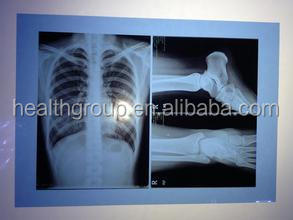Kodak Patch Sheets
Material Safety Data Sheets: To view a Material Safety Data Sheet, click on the Document number in the right-hand column. Some Material Safety Data Sheets.
Eastman Kodak Company, 1999 TECHNICAL DATA / REFERENCE August 1999 AM100 Copying Old Photos More and more people these days are taking an interest in.
Supplies and Consumables For Kodak Scanners Kodak Alaris offers supplies and consumables for all Kodak Scanners. For optimal feeder performance and image.
Index to this web page: Michael Talbert has provided a considerable amount of historical information on the early Kodak print films, Kodacolor.

Software Overview Kodak Software automate document capture for greater productivity Kodak s Smart Touch functionality Kodak understands the demands of document.
Patch Codes
Material Safety Data Sheets: 3M - A-2 Cable Preparation Kit.pdf 3M - Brand Strip Caulk White Part No. 08575.pdf 3M - Cable Cleaner Degreaser 1606.pdf.

Kodak i3400 Series scanner: Kodak i3400 scanner. 90 pages per minute 180 IPM Up to 20,000 pages per day duty cycle. ADF holds 250 pages for feeding.
Patch codes are a set of 6 distinct barcode patterns 1, 2, 3, 4, 6 and T
that are typically used as document separators when scanning.
Introduction
A patch code is a pattern of parallel, alternating black
bars and spaces a barcode that is printed on a document. When scanning
the document the patch code can be recognised and acted upon. The patch code may
be recognised by the scanner itself more usually in the top-end expensive scanners
or by the scanning or processing software or with a TWAIN or ISIS driver. Exactly what action is taken depends
upon the design of any given system.
A patch code needs to be printed in a certain position, usually near the
leading edge feed-edge of the document. This will vary depending upon the
model of scanner used, and the orientation of the page. For this reason patch
codes are often printed on all four edges of the page. Some scanners such as
the Kodak i800 require the patch code to be printed parallel to the feed-edge,
other scanners such as the Kodak i5000 require the patch code to be
perpendicular at right angles to the feed-edge.
A typical use of a patch code is distinguish where one
document ends and another begins when a pile of documents are loaded into the
sheet-feeder ADF of a document scanner.
The patch code was originally created by Kodak to signal document processing
applications while reading large documents. The different codes will signal
certain events such as a page/section break or a change from single sided to
duplex scanning. Six distinct barcode patterns Patch 1, 2, 3, 4, 6 and T were
defined. A common use now is to use the Patch T code or the Patch 2 code as a Page document
separator.
Note that no data is encoded in a patch code. Similarly
although there may be 4 identical patch codes on a page one in each
orientation patch code readers hardware or software would only ever return
one.
It is also possible to add conventional barcodes typically Code 39 to a sheet
to, for example, indicate the document type.
It is possible to incorporate a patch code into a form typically a Patch 2
code on the first page of the form, to indicate a new file should be started
for each form.
The exact action taken on recognising a patch code will depend upon the
system and software used, and may be configurable in a given application.
Typically patch Type 2 is used for Document Separation, Type 3 for Batch
Separation and Type T can be used for either Document or Batch Separation.
Patch types 1, 4 and 6 are not used for document separation but to enable other
features such as colour or multifeed detection.
Download and print
patches-for-printing-on-A4-paper.pdf
Download and print
patches-for-printing-on-US-Letter-paper.pdf
Patch code T is often used
as a separator page between different documents when scanning.
Download and print a Patch-Code-T
sheet as a separator page between different documents when scanning.
A typical Patch Code layout, with the patch
code at each edge of the document.
A Patch Code layout for scanners requiring
the patch code at right angles.
A Patch Code layout suitable for multiple types of scanners.
Patch Codes are wide/narrow 1D barcodes as are Code 39 barcodes, for
example.
Patch Codes are best printed in black on white paper, however you can use light
pastel coloured paper to make patch pages more visible to operators.
Thanks to Kodak for this further technical information about patch-codes.
Patch Codes Separator Pages
Batch Scanning PDF Searchable Images scanning TIF or PDF scanning.